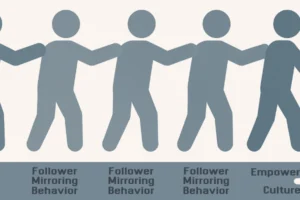Strategic Planning – Strategy 101
Formulating a strategic plan can be difficult for some leaders and organizations. This can be for several reasons but likely includes not being confident in knowing all of the facts or not being able to cause & effect something out to a logical conclusion. I want to help. Here are a few things to remember as you start the process.
First, you should probably know what it means to manage by fact and with a knowledge of variation. Some leaders resist change or efforts to change due to a belief that a special problem exists that will likely impede said change. However, this is often not the case, and being able to see this will help greatly.
Controlled variations (common causes) are variations within an established process and are usually predictable. Uncontrolled variations (special causes) are variations outside of the process and are often unpredictable. It is important to make and understand this distinction.
An easy example to help explain this might be found by looking at a simple gas station. That gas station will likely sell lots of gas over a busy holiday. It can predict with reasonable certainty that they might need to refill their tanks before or after the holiday if they want to remain open for business. This is a controlled variation. They might not sell as much gas during other times of the year but can predict with a level of certainty that this time period is different. Of course, they could be taken off guard by not paying attention, but that’s not the point.
An uncontrolled variation might be the meteor that struck the tanks and blew up the gas station. This is an uncontrolled variation, and situations like this are almost impossible to plan for. That’s why it’s important to focus more on controlled variations instead of uncontrolled ones.
So to manage by fact and with a knowledge of variation, leadership would collect data about the work being performed and use that information to make decisions about and affecting work – but do so while considering the variations that have already been or can be identified (Summers, 2009). Simply stated, leadership should resist the temptation of believing that a special problem is impacting the system when there is more than likely just a natural and controlled variation in the system (identified or not). Once an organization can come to terms with this, it’s much easier to begin formulating effective and strategic plans that make sense and solve problems.
With that in mind, we should probably explore how quality strategic planning differs from traditional strategic planning. The biggest difference (though there are several) between quality strategic planning and traditional strategic planning is that quality strategic planning is more defined and often based on process results and actual data. Traditional strategic planning is more about broad ideas and undefined direction and often resembles a cowboy shooting from the hip in a particular direction. Metaphorically speaking, traditional strategic planning would be like a Matchlock Musket compared to quality strategic planning, which would resemble more of a precision-guided Hellfire II lightweight anti-tank weapon.
That’s quite a visual! Strategic planning is probably a better idea when results matter. An effective organization needs a strategic plan for a couple of reasons. To begin with, a strategic plan will likely consider the company’s vision and mission (Summers, 2009). This is important because it will act as a type of road map for the direction in which decisions will be made. This allows the company to formulate the necessary details of each “mission” that will ultimately help the organization achieve even bigger goals or the overall vision.
Strategic plans do take some time, though. The benefits of taking the extra time to formulate a strategic plan are plenty. For example, strategic planning clearly defines the purpose of the entire organization (NAMAC, 2009). It also improves the use of precious resources, establishes the direction for the organization, increases innovation, and ultimately supports customer satisfaction (Summers, 2009). Of course, it also establishes a road map in which to follow in case someone loses their way, and it acts as a reminder or a “guide” depending on how things are going. Furthermore, when it is written well, it is owned by all, and it takes strategic and collaborative efforts to adjust it.
This is not to say that making one is easy, and it’s not to say that a strategic plan is for everyone. I concede to the idea that it’s not necessary for “every” organization or situation. It is, however, likely necessary in most. Regardless, there are a few things that an organization needs to know about itself before creating a strategic plan.
On the surface, the organization would want to know its strengths and weaknesses, customer information, economic environment information, competition, government information, technological environment, etc. This is basic stuff. This list would all be critical information when formulating any kind of organizational plan, and this list could get an organization off and running in a short time.
However, things like vision, mission, critical success factors, goals, objectives, indicators, and contingency plans are VERY important for strategic planning and need to be factored in. I think these are essential for several reasons. If done correctly, the second list would undoubtedly encompass the first. I also like the second list more because its focus is geared toward the ultimate goal, whereas the first list seems more focused on “today.”
If the study of leadership has taught me anything, it would be that maintaining focus on the long term is critical (vision). In my opinion, the second list that I provided does just that. Formulating a strategic plan with the longer term in mind will undoubtedly be a better idea. To do that, one must fundamentally know what the organization wants and dreams of being. Only then can the organization incorporate those ideas into its strategic plans.
Be sure to check out my article on Organizational Development
References
NAMAC. (2009, January 1). What are the benefits of strategic planning? Retrieved from http://www.namac.org/strategic-planning-benefits
Summers, D. C. S. (2009). Quality management: Creating and sustaining organizational effectiveness. Upper Saddle River, N.J: Pearson/Prentice Hall.




